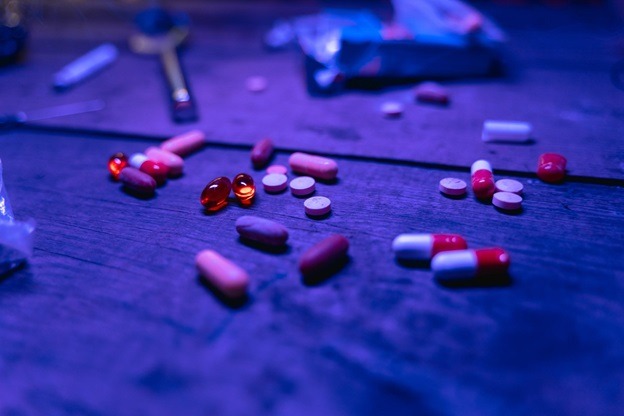Almost every US citizen in modern-day America benefits from the use of pharmaceutical drugs – some use doctor-prescribed drugs to treat certain illnesses, while others illegally obtain drugs to enjoy a temporary high on life. Awareness is the key to understanding the difference between the use and abuse of drugs. Most studies show that addicts don’t even realize they have an addiction unless they are informed by a loved one or struck by a fatal incident. The first step to using drugs responsibly is knowing what kind of drugs exist in the world and how bad they can be for the human body when abused. Here is a list of the ten most commonly abused drugs in the US:
1. Alcohol
Drinking alcohol is socially acceptable, which explains why alcohol abuse is the most widely recognized addiction in the US that claims many lives annually. According to the Delphi Health Group, more than 14 million adults in the United States alone have an alcohol use disorder. For most individuals, the relationship starts as a high school Junior and develops into a lifelong commitment if followed by drinking actively afterward. Regular consumption of alcohol can severely damage the brain and other essential organs of the body.
2. Marijuana
Made from the dried and shredded leaves, stems, flowers, and seeds of the Cannabis plant, this psychoactive drug is the second most abused drug in the US. Marijuana has several street names – pot, herb, weed, grass, skunk, Mary Jane, ganja – can lead to a lifetime of brain damage and other medical conditions if used in excess. Unfortunately, recreational use of marijuana in adults under 25 can also develop memory loss, mental illnesses, and long-term addiction.
3. Pain Relievers
An alarming number of adults abuse prescription drugs. These numbers are estimated to grow in the next few years, with more drugs usually obtained from family members, friends, and doctors. Common pain relief drugs include morphine, methadone, codeine, hydrocodone, and oxycodone. Unfortunately, individuals who become addicted to painkillers don’t realize they have a problem unless they stop using them and the withdrawal symptoms kick in. According to a report, the US has seen a 264% increase in deaths from synthetic opioids (or prescription drugs) from 2012 to 2015.
4. Hallucinogens
The famous drug-related state of Euphoria (a feeling of intense excitement or happiness) is directly associated with hallucinogens. These are mind-altering or perception-altering drugs known as LSD, Ecstasy, MDMA, DMT, and ketamine. Users of this drug see vivid colors and experience intense sensations. Extreme cases of hallucinogen abuse can lead a person towards traumatic experiences, ravaging emotions, tremors, loss of appetite, blood pressure, and a fluctuating heart rate.
5. Depressants
According to the Anxiety & Depression Association of America, anxiety disorders are the most common mental illnesses in the US. Approximately 40 million adults are suffering from anxiety. US doctors typically prescribe depressants to patients to help them sleep better or reduce their anxiety levels. However, it doesn’t take time for people to start depending on these anti-anxiety sedatives for performing everyday functions, leading to severe addiction.
6. Cocaine
Cocaine is a drug recognized as a powerful stimulant used by individuals to elevate mood and heighten energy and alertness. Cocaine is known as coke, C, snow, candy, rock, Charlie, flake, or Coca in street language. Unfortunately, most cases of cocaine abuse push people close to abnormally high heart rates, blood pressure, and other dangerous effects that can cause severe medical impairments in the human body.
7. RX Stimulants
Also known as prescription stimulants, RX stimulants are prescribed to patients with ADHD. The drug can improve attention, executive function, and emotional regulation when used moderately. However, in comparison, when the drug is misused, it can have serious side effects on the human body. To satisfy their drug habits, several people access stimulants like Adderall or Ritalin under fake prescriptions. These highly addictive drugs showcase intense withdrawal symptoms, making quitting addiction extremely hard.
8. Inhalants
Inhalants are volatile toxic substances that are particularly dangerous to consume. Chemicals prevalent in these drugs have intense and immediate consequences that linger in the body and brain for a long time. Commonly abused inhalants include paint thinner, dry-cleaning fluid, nail polish remover, spray paint, gasoline, chloroform, anesthesia, and other solvents with loud fumes. In most cases of inhalant abuse, addicts experience damage to the heart, brain, lungs, and kidneys.
9. Meth
Methamphetamine, also known as chalk, crystal, glass, ice, speed, crank, fire, or Tina, is a dangerous drug usually obtained illegally. This addictive stimulant can be injected into the body in various ways like smoking, injecting, snorting, or swallowing. The demand for this drug is constantly on the rise, which explains why the production of amphetamine-type stimulants is estimated at being nearly 500 metric tons a year.
10. Heroin
Heroin belongs to the opioid drug family, also known as opiates, popular among people struggling with substance abuse for its pain-relieving properties. Street names for heroin include black tar, ska, horse, junk, smack, and H. People get addicted to heroin when they turn to the streets to treat their pain with self-medication, creating a serene disparity in chronic pain treatment. Addicts don’t realize that with every purchase, they are fueling a lifelong drug addiction that has caused painful deaths from overdose all over the US.
Conclusion
Now that you know about the common types of drugs and their ensuing addiction potential, be sure to spread the word around. Keep an eye out for people who are seemingly getting addicted to any of the substances mentioned above. Help others fight addiction and make the world a safer place.
